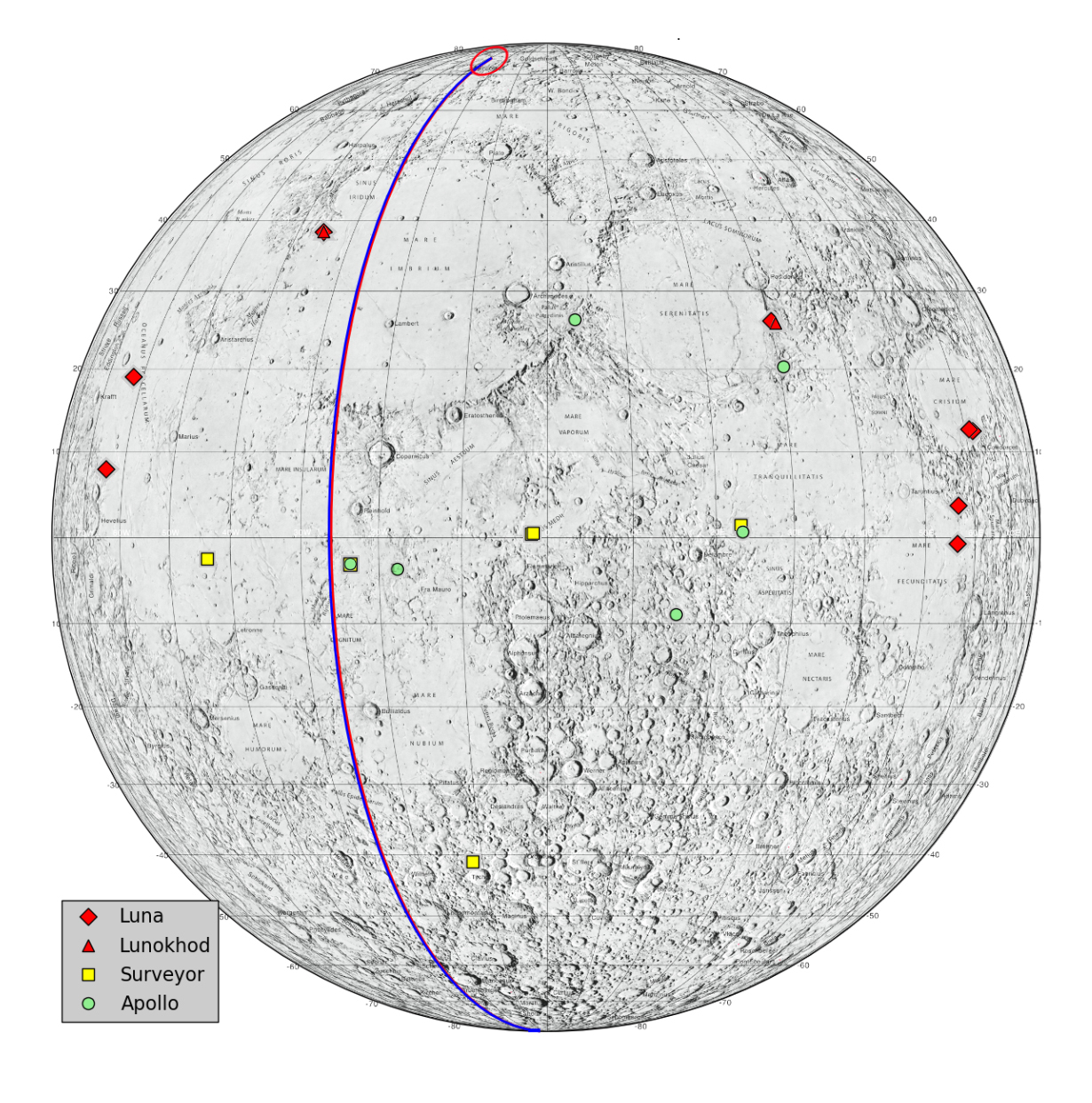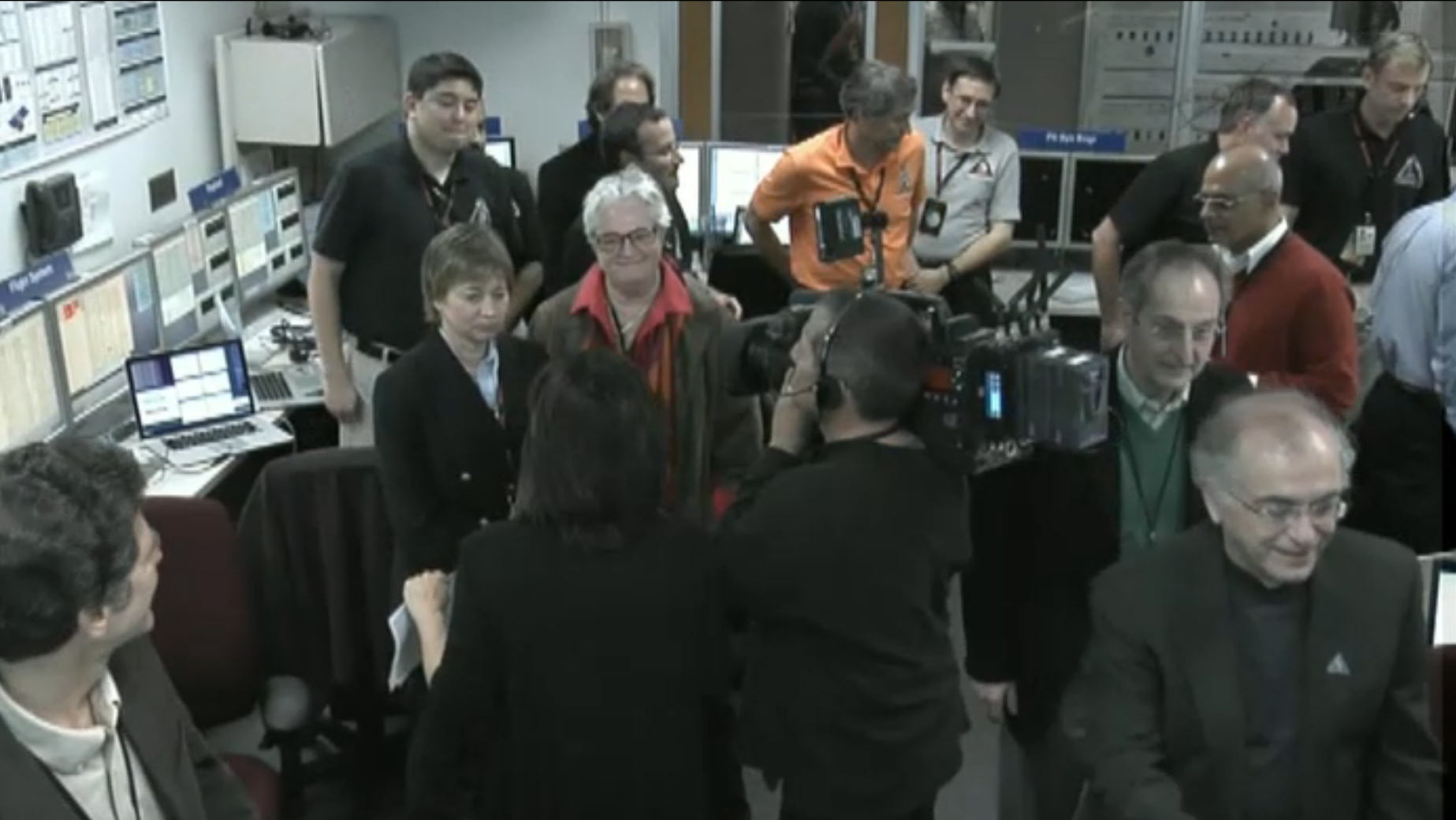GRAIL
Contents
Gravity Recovery And Interior Laboratory (GRAIL)

Credit: NASA
Description
GRAIL is a NASA-sponsored mission to produce a high-resolution map of the Moon's gravitational field; whose data will be used to understand the moon’s interior structure and composition, its thermal history, and ultimately its relationship to formation in the inner Solar System. Launched on 10 Sept., 2011, the mission consists of two separate spacecraft – GRAIL-A (“Ebb”) and GRAIL-B (“Flow”). Flying in precise formation in a near-circular, near-polar orbit above the Moon, Ebb and Flow are designed to detect subtle movements toward and away from each other, as they record the gravitational effects due to variations of the moon’s surface (mountains, craters, hidden masses) below. From March to May 2012, both spacecrafts were orbiting at an average altitude of ~ 55 kilometres above the lunar surface, however, from August to December 2012, during its extended mission, the orbital altitude will be lowered down to ~ 23 kilometres approximately. The mission also carries an instrument called MoonKam (Moon Knowledge Acquired by Middle school students); designed to be used as an educational and public outreach programme to get students involved in observing the Moon. By requesting pictures to be taken of particular features that they are interested in on the lunar surface, the students learn more about how those features are formed, and how they relate to the lunar surface as a whole. MoonKam was headed by astronaut, Sally Ride, until her death in July 2012. The mission is expected to end on 17 December 2012, at approximately 2:28 p.m. PST (5:28 p.m. EST), when both spacecraft's impact the surface (see Additional Information below) of the Moon. Orbit of another lunar orbiter known as the Lunar Reconnaissance Orbiter (LRO) will be slightly modified to observe the impacts as they occur (in darkness), with subsequent imaging afterwards under better lighting conditions of their resultant effects. The area of the lunar surface in which both GRAIL spacecrafts impacted upon will be named in honor of Sally Ride (official name to be announced) – the first American woman, and youngest astronaut, to enter into low earth orbit in 1983.- JohnMoore2 JohnMoore2
Additional Information
- Principal Investigator – Prof. Maria T. Zuber of the Massachusetts Institute of Technology, Cambridge, Mass.,.
- Other people involved with the GRAIL mission.
- GRAIL's Gravity Field of the Moon map below shows 0 to 360 degrees longitude, and -72 degrees to +72 degrees latitude. Credit NASA. Click for larger view

- NASA image gallery
- Impact region: Images below show the predicted impact locations for both Ebb and Flow onto the lunar surface on 17 December 2012.
Left: Flight path of EBB and Flow across the nearside of the Moon – credit NASA/JPL-Caltech/MIT/GSFC.
Mid-left: Sequence of video images taken from a NASA video – credit NASA/JPL-Caltech/MIT/GSFC.
Mid-right: Aerial view of impact region (note, the latitude given in this image is incorrect as it should read 26.63W, or 333.37E) – credit NASA/GSFC.
Right: Graphical representations of impact points derived from LOLA data – credit NASA/JPL-Caltech/MIT/GSFC. Click thumbnails for larger views
- Impact: Images below show series of images leading to final impact period.
Left: Computer graphic representation of both Ebb and Flow several seconds before impact – credit NASA TV.
Mid-left: Computer graphic representation of when Ebb impacted – credit credit NASA TV.
Mid-right: View of the operation’s room and scientists involved just several seconds after both GRAIL spacecrafts impacted the lunar surface – credit NASA TV.
Right: Principal investigator of GRAIL (left) and relative of Sally Ride (right) – credit NASA TV. Click thumbnails for larger views
- Before and After: Images (below) show the results for Ebb and Flow before and after impact - credit NASA/GSFC/Arizona State University. Grail A impacted at lunar coordinates 75.609N, 333.407E, while Grail B at 75.651N, 333.168E.
LROC Articles
LPOD Articles
Bibliography
- Zuber, M. T. et al (2016). Gravity field of the Orientale basin from the Gravity Recovery and Interior Laboratory Mission – Science 28 Oct 2016: Vol. 354, Issue 6311, pp. 438-441. DOI: 10.1126/science.aag0519, 2016. - JohnMoore2 JohnMoore2
- Zuber, M. T. et al (2016). EXPLORING THE DEPTH DISTRIBUTION OF LUNAR CRUSTAL MASS ANOMALIES USING GRAIL GRAVITY AND LOLA TOPOGRAPHY. - 47th Lunar and Planetary Science Conference 21 - 25 March 2016.
- Conrad, J. W. et al (2016). CHARACTERIZING HIDDEN IMPACT BASINS DISCOVERED BY GRAIL GRAVITY DATA. - 47th Lunar and Planetary Science Conference 21 - 25 March 2016.
- Neumann, G. A. et al (2015) Lunar Impact Basins Revealed by Gravity Recovery and Interior Laboratory Measurements – Science Avances Sci Adv. Oct; 1(9): e1500852. 2015.
- Andrews-Hanna, J. C. et al (2014) THE GEOPHYSICAL NATURE OF THE PROCELLARUM REGION OF THE MOON AS REVEALED BY GRAIL GRAVITY DATA – 45th Lunar and Planetary Science Conference 17 - 21 March 2014.
- Besserer, J. et al (2014) GRAIL CONSTRAINTS ON THE VERTICAL DENSITY STRUCTURE OF THE LUNAR CRUST – 45th Lunar and Planetary Science Conference 17 - 21 March 2014.
- Miljković, K. et al (2013). Asymmetric Distribution of Lunar Impact Basins Caused by Variations in Target Properties – Science Vol. 342 no. 6159 pp. 724-726 DOI: 10.1126/science.1243224. Published Online 8 November 2013
- Melosh, H. J. et al (2013). The Origin of Lunar Mascon Basins – Science DOI: 10.1126/science.1235768. Published Online 30 May 2013.
- Andrews-Hanna, J. C. et al (2012). Ancient Igneous Intrusions and Early Expansion of the Moon Revealed by GRAIL Gravity Gradiometry – Science DOI: 10.1126/science.1231753. Published Online December 5 2012.
- Wieczorek, M. A. et al (2012). The Crust of the Moon as Seen by GRAIL – Science DOI: 10.1126/science.1231530. Published Online December 5 2012.
- Zuber, M. T. et al (2012). Gravity Field of the Moon from the Gravity Recovery and Interior Laboratory (GRAIL) Mission – Science DOI: 10.1126/science.1231507. Published Online December 5 2012.
- Zuber, M. T. et al (2012). Preliminary results on the structure of lunar highland crust from GRAIL gravity and LOLA altimetry (PDF file) – LPI Lunar Highland’s Crust Conference, July 2012.








